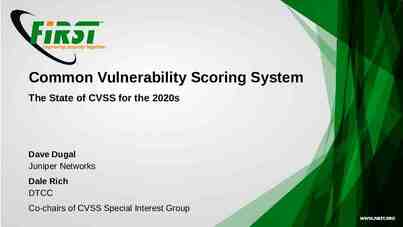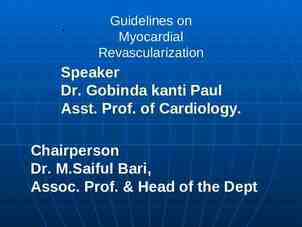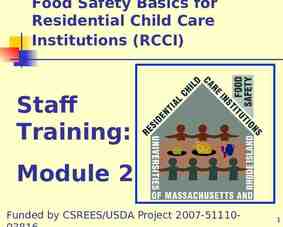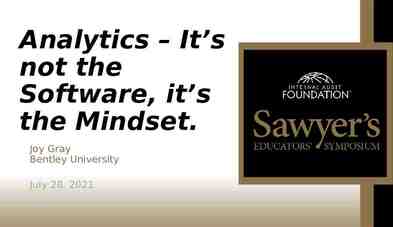Dental Workforce Trends— Opportunities for Improving Access
71 Slides1.56 MB
Dental Workforce Trends— Opportunities for Improving Access Shelly Gehshan, M.P.P. National Academy for State Health Policy March, 2008 1
What I’ll cover Overall workforce trends State strategies in rural areas State action on workforce Progress on new workforce models Implementation Thoughts FYI--Lessons learned from Medical field 2
Is there a Shortage in the US? Active Dentists per 100,000 Population 55 54.5 54.5 54 53.3 53 52 52 51 50.7 50 49 48 2000 2005 2010 2015 2020 3
Is there a shortage? Active Dentists per 100,000 Population (2000) 4 Source: American Dental Association, Survey Center. US Census Bureau (2001).
Dentist Vacancy Rates at Health Centers (2004) 5 Source: Roger Rosenblatt, Holly Andrilla, Thomas Curtin, and Gary Hart. “Shortage of Medical Personnel at Community Health Centers,” Journal of the American Medical Association 295, No. 9 (2006): 1042-10491.
Age Distribution of Private Practice Dentists (2005) 35 30 25 20 15 10 5 0 35 35-44 45-54 55-64 65 6 Source: American Dental Association, 2005
Is There a Shortage of Hygienists? 158,000 hygienists in 2004 Expected to grow ( 27%) by 2014 Hygienists leave profession ADHA says that, due to supervision requirements in many states, hygienists must locate where dentists are, so they are “maldistributed” as well 7
Number of Employed Dental Hygienists, in thousands 250 212 226 200 150 152 158 150 149 161 166 145 100 50 0 0 0 20 2 0 20 4 0 20 6 0 20 8 0 20 0 1 20 2 1 20 4 1 20 8 Source: U.S. Department of Labor, Bureau of Labor Statistics, http://www.bls.gov
Dental Safety Net Needs Expanding No “dental emergency rooms” Serves less than 10% of 82 million underserved people (Bailit, JADA, 2003) Critical safety net consists of community health centers, hospitals, dental and hygiene schools, school-based health centers 9
State Strategies for Rural Areas 10
Supply, Redistribution Strategies State loan repayment programs for rural DDs and RDHs Licensing strategies – Foreign dentists in safety net settings – Licensure by credential – Licensure after service, residency Payment incentives (higher Medicaid fees in rural areas, clinics, e.g. Utah) 11
Ways to Increase the Supply. Exempt retired dentists from liability for volunteering to work in vans, CHCs, RHCs Establish rural clinical training sites or preceptorships for dental and hygiene students Work with rural schools and colleges to recruit dental and hygiene students Establish scholarships for rural dental students 12
More Ways to Increase the Supply. Help add dental capacity in clinics, CHCs Start a revolving loan fund for establishing rural practices Enhance sales of rural practices with grants for equipment upgrades Play “matchmaker” to help retiring rural dentists sell their practices 13
More Ways to Increase the Supply. Teledentistry via email or video saves trips Mobile dental vans – expensive, waste disposal problems – continuity of care and follow-up problems – hard to staff, but sometimes the only option Mobile dental units – rotate to locations like schools, nursing homes – easier to staff but smaller capacity 14
State Action on Workforce 15
Integrating Oral Health into Primary Care Dentist to population ratio shrinking; PCP to population ratio is growing Prevention is cheaper, better More frequent, earlier use of primary care services for young children and underserved Patient trust and comfort (fear factor) 16
Oral Health Services Medical Professionals Can Provide Oral health evaluation (visual screening for decay) Application of fluoride varnish Patient and parent education Dispensing oral health supplies – Toothbrushes, toothpaste, xylitol gum Limited prophylaxis, antimicrobials Case management, referral 17
State Action Curricula or training for primary care providers (AL, AR, CA, KY,ME, NH, NV, NY, OR, SD, WA, WI) Medicaid payment for MDs to provide fluoride varnish (13 states)* Joint initiatives for screening and referral (SC) * Source: Survey of Medicaid/SCHIP Directors of Administration conducted by NASHP, 2008 18
Challenges in Integration Involve dentists in training MDs, RNs, NPs Link medical and dental homes Reimbursement through public and private insurance—make it universal Differences in fee-for-service and managed care Diffusion of idea; change practice patterns 19
Trends in dental hygiene Gradual loosening of supervision, expansions in scope Movement towards providing services in public health settings Bulk of hygienists still practice in traditional settings; maldistributed as are dentists 20
Supervision and Payment for Hygienists General supervision in 45 states in dental office or some settings Direct access to patients in some settings in 22 states (AZ, CA, CO, CT, IA, KS, ME, MI, MN, MO, MT, NE, NH, NM, NV, NY, OK, OR, PA, RI,TX, WA)* Medicaid can reimburse hygienists directly in 12 states (CA, CO, CT, ME, MN, MO, MT, NM, NV, OR, WA, WI)** * Source: American Dental Hygienists’ Association, “Direct Access States,” Available at www.adha.org ** Source: American Dental Hygienists’ Association, “States Which Directly Reimburse Dental Hygienists for Services under the Medicaid Program,” Available at www.adha.org. 21
Current Workforce Proposals Proposals to expand scope or loosen supervision of hygienists** – 7 states have proposals far along or completed in the legislative process (MA, WI, MN, MT, CA, OH, KS) Proposals to develop new dental practitioners** – 3 states have proposals far along in the legislative process (MN, MI, MA) – 11 states are discussing proposals (CO, ME, NM, CA, FL, TX, OH, OR, KS, CT, PA) **Survey of State Oral Health Coalition Leaders, NASHP 2008 22
Kansas Extended Care Permit (ECP) Hygienists RDH-ECP are hygienists in community settings (Head Start, schools, health depts, safety net clinics, and long-term care facilities) Hub and spoke system--general supervision 55 hygienists have ECPs; 25 working in community settings. In 2007, settings changed: – ECP I hygienists can serve wider range of children – ECP II hygienists can serve a wider range of elders and adults with special health care needs – Hygienists can apply fluoride varnish in community settings Source: Kansas Dental Hygienists’ Association, http://www.kdha.org/ 23
California Registered Dental Hygienists in Alternative Practice (RDHAP) Work independently in underserved settings (HPSAs, FQHCs, schools, nursing homes, public health) 2 education programs in CA Requirements: 150 CE units, BA or equivalent, 2,000 hours in last 36 months as licensed RDH Licensure via standard testing process, plus referral agreement with DDS required. Need proof of dental visit and prescription for hygiene services within 18 months of seeing a patient Source: Beth Mertz, Presentation on “Meeting the Nation’s Oral Health Needs,” HRSA’s BHPs 2008 All Programs Meeting 24
The Business of RDHAP Practice Business plans--education program needed on how to do these Developing payment structures and charting system—who will be charged Start up loans--mobile equipment runs 25K Building the business – Strategies vary by setting and community – Diversification helps mitigate risks – Outreach to consumers and health care systems Overcoming resistance Building relationships and for what? Source: Beth Mertz, “Advancing Oral Health of Underserved Populations through Innovative Oral Health Care Delivery Models: Registered Dental Hygienists in Alternative Practice, “ Presentation for Center for the Health Professions Seminar Series, 2008. 25
Structure of RDHAP Practice Laws/Regulations – Allow practice, but also limit it – Title 22/OBRA: vague construct creates confusion Care systems – RN, LTC homes, Schools, Clinics, etc. Payment systems – Denti-Cal, self pay, insurance companies Anti-competitive practices of dentists – Lawsuits, exclusion from institutions, slanderous marketing & fear-mongering, betrayal of trust, exclusion of suppliers or dentists who collaborate Source: Beth Mertz, “Advancing Oral Health of Underserved Populations through Innovative Oral Health Care Delivery Models: Registered Dental Hygienists in Alternative Practice, “ Presentation for Center for the Health Professions Seminar Series, 2008. 26
What isn’t Happening in States, but Needs to Disease management approach for dental caries – Caries is infectious, recurs Change to primary care model in dentistry – Private practice model organized around surgery, restorations, maximizing income – Primary dental care would involve screening, risk assessment, case management, referrals 27
And, Investment in Upstream Strategies Sealant programs serve too few kids – ME: programs reach about ½ the schools (better than many states) Water fluoridation, in some areas it’s stalled or retreating, despite sound science, low cost Education and outreach for at-risk families 28
Progress on New Provider Models 29
Existing Models Dental therapist—New Zealand model – Called dental health aid therapist in AK; in use in 53 countries Oral health therapist—newer 3-yr program combines dental therapy and hygiene Expanded Function Dental Assistants – Underutilized; can expand productivity and profitability of dental practices – For state licensing, scope info, check: http://www.danb.org/main/statespecificinfo.asp 30
EFDAs are Underused Only 16 states train and license Expanded Function Dental Auxiliaries – EFDAs are dental extenders that make practices more profitable Increase efficiency in large practices, clinics Most dentists not trained to use them – RWJ grant to PA may help other states replicate training and practice models 31
Evidence on EFDAs Lotzkar et al, JADA. 82(1971): – Dental teams with 4 EFDAs and 1 dentist increase productivity over base-line performance by 110% to 133% compared to 3 EFDAS and 1 dentist with productivity increase over base-line performance of 62% to 84% Abramowitz et al, JADA. 87(1973): – As more auxiliaries added to dental team, relative costs per unit of time worked decreased from 2.54 to 2.26 and net income for the dentist increased from 28,030 to 39,147 Lobene et al, The Forsyth Experiment: An Alternative System for Dental Care (Cambridge, MA: Harvard University Press, 1979): – Optimal setting of 1 dentist supervising 2 hygienist-assistant teams provided calculated annual net of the gross income to practice of 35.3% and 47.0% by welfare and usual fees, compared to practice with 1 dentist and 1 team that had calculated expenses of 28.7% and 42.9% annual net of gross income to the practice 32
New Models for Dental Providers ADA model — Community Dental Health Coordinator (similar to Primary Dental Health Aides in Alaska) ADHA model — Advanced Dental Hygiene Practitioner Pediatric Oral Health Therapist (a dental therapist specializing in kids) 33
Community Dental Health Coordinator Prevention: education, fluorides, sealants Treatment: gingival scaling, polishing Restoration: atraumatic restorative therapy Supervision: direct or indirect for services, general supervision for patient education 34
Advanced Dental Hygiene Practitioner Prevention: comprehensive services Treatment: manage periodontal care, prophylaxis, prescriptions Restoration: simple restorations, extractions Supervision: general supervision or unsupervised; in collaborative practice, or private dental offices 35
Dental therapists Prevention: fluoride treatments, sealants Treatment: x-rays, prophylaxis, gingival scaling Restoration: simple restorations, stainless steel crowns, extractions Supervision: general supervision under standing orders 36
ADHP DHAT CDHC Masters level 2-year program 12-18 months Licensure Curriculum draft on web Seeking partners, , legislation, pilot planned at 2 MN colleges IHS certification Certification (like licensure) In 53 countries Planning Proven model, many studies published. Pending legis. bars use in lower 48. ADA has approved 2 M for 3 pilot projects; pilot ruled illegal in MI 37
ADHP DHAT CDHC True midlevel provider (RDH 2 yrs) Function like midlevels, but educated in less time Part dental assistant, part social worker (not a midlevel) Post-RDH career track Could be supported by reimbursable services High school grads Could be supported by reimbursable services High school grads Supported by grants? Few reimbursable services 38
ADHP DHAT CDHC Pool of RDHs ready to train Recruited from underserved areas, groups Not clear, dental assistants? Risk assessment, case management Useful to expand safety net Basic preventive and restorative services Useful to expand safety net Prevention, education, casefinding for dentists Useful for prevention, limited use in safety net 39
Restorative Capacity of Providers Procedures EFDA CDHC DHAT (proposed) Atraumatic Restorative Technique (ART) Placement of temporary restorations X Simple restorations X Light cure composites X Simple extractions Lab processed crowns X ADHP (proposed) X X X X X X X X X X Pulpotomy X X Pulp capping X X Source: NASHP, “Clinical Capacity of Current and Proposed Providers,” Table developed by NASHP, February 2008 40
Cost Effectiveness of Dental Therapists in Canada Dental therapists reduced the number of medical evacuations Transportation costs dropped dramatically Dental therapists can deal with most emergencies Dental therapists make dentists’ visits more productive, triage patients, take x-rays, arrange for medications before dentist arrives* Quality of care studies determined that the procedures performed by dental therapists are of equal or greater quality than those performed by dentists * Source: Dr. Todd Hartsfield, former director of Saskatchewan Health Center 41
Evidence of Dental Therapists’ Quality of Care P.E. Hammons, H.C. Jamison, L.L. Wilson. “Quality of service provided by dental therapists in an experimental program at the University of Alabama.” Journal of the American Dental Association. 82 (1971):1060-1066 L.J. Brearley, FN Rosenblum. “Two-year evaluation of auxiliaries trained in expanded duties.” Journal of the American Dental Association. 84 (1972): 600-610. E.R. Abrose, A.B. Hord, W.J. Simpson, A Quality Evaluation of Specific Dental Services Provided by the Saskatchewan Dental Plan. (Regina, Canada: Province of Saskatchewan Department of Health, 1976). Gordon Trueblood, A Quality Evaluation of Specific Dental Services Provided by Canadian Dental Therapists (Ottawa, Ontario, Canada: Epidemiology and Community Health Specialties, Health and Welfare Canada, 1992). 42
Newtok Clinic, YukonKuskokwim 43
AFHCAN Cart Alaska Federal Health Care Access Network Wireless Networking Touchscreen ECG / Video Dental Camera and Otoscope / Scanner / Digital Camera Mobile – Customized Patient safe WWW. AFHCAN.ORG 44
45
How do We Move Forward on New Workforce Models? 46
3 Requirements for Policy Change 1. Shared perception of the problem – Public agreement; communication frames issue, raises priority 2. Political support – Broad-based support, all powerful groups or actors involved 3. Viable policy solution – Workable, timely, affordable, proven 47
Problems lead to Solutions Parents not getting kids to the dentist Provide education to parents, incentives, fines Areas lack fluoridated water, sealant programs Fluoridate water, fund sealant programs, school based care Too few dentists locate near, serve low income patients Recruit dentists, pay more to treat low income patients, fix hassles 48
Consider Attitudes in Building Support for Solutions Provide education to parents, incentives, fines Low income parents are irresponsible; No incentives! Fluoridate water, fund sealants, schoolbased services Some oppose fluoride, more services to the poor (equity issues) Recruit dentists to underserved areas, pay more, fix hassles Dentists are rich already, won’t come, don’t care 49
Attitudes about Dentists “They feel no obligation to the community.” “Uncooperative, greedy, lacking in empathy.” “The most territorial mammals on the face of the earth, except maybe dogs.” “Don’t want to care for poor people but they don’t want us to either.” Source: S. Gehshan, T. Straw, “Access to Oral Health Services for Low Income People,” National Conference of State Legislatures, 2002. 50
Organized Dentistry Does Care “voluntary programs to deliver free care are no substitute for fixing the Medicaid program.” “We need to get more private dentists participating in Medicaid.” (Roth, 3/27/07) Active on many issues (SCHIP dental, fluoridation, Title VII, dental issues in IHS, CMS, HRSA programs) 51
Important Steps State and local policy communities come to consensus, not national groups Focus on the underserved, not providers Communicate solutions, don’t assume people understand Seek investments from foundations, governments 52
Important Partners Payors—Medicaid, SCHIP, private insurers, business Coalitions—Provider associations, dental/ medical leaders Legislators, local and state agency leaders Universities, training programs Safety net clinics, rural providers Foundations 53
Ideas for groundwork Estimate impact of new providers on private dental practice, safety net clinics Develop financing options to support them, dentist supervisors, and facilities where they practice Target new providers to specific settings Data collection to monitor supply, demand Establish multi-state collaboratives 54
Legal and Regulatory Groundwork Establish manpower pilot authority (CA) Consider new regulatory structure for auxiliaries (WA, NM, IA, CT) Examine ban on corporate practice of dentistry—restricts choices for dentists, and options for communities Examine dental practice act—may need safety net exemption 55
Why Dentists Oppose Midlevels Would create a two-tier system of care There’s no shortage of dentists It’s illegal for non-dentists to do dentistry They would jeopardize patient safety Inefficient if they practice independently They would take patients away from private dentists 56
Answering Those Concerns We have 3 tiers now (private, public, none) Documented shortages in many areas States regulate all health professionals, including dentists, to protect public safety Efficient business models can be developed Private dentists don’t treat 1/3 of the public; won’t lose business 57
What dentists see 58
Dental Economics About 55% from insurance, 45% cash Very sensitive to downturns in the economy; experience with oversupply Overhead averages about .60- .65 of each dollar earned Dentists have more to gain than lose from new providers About 45% of patient visits are for hygiene services 59
Source: Albert Guay, “Dental Practice: Prices, Production, and Profit,” JADA, Vol. 136 (March 2005), 359. 60
Concurrent Steps to Create New Providers Curriculum development, faculty training, recruiting students Accreditation Legislation establishing new providers; issue enabling regulations Licensing or credentialing process 61
System Questions How to limit opposition and ensure new providers improve access? – License them only in dental HPSAs? – License in safety net settings only? – Enlist physicians, hospitals How to involve and benefit dentists? – Develop referral networks, placement sites – Legal responsibility, and payment, for supervising, collaborating with, new providers 62
Lessons Learned from the Medical Field 63
Nurse Practitioners Models created by leaders in 1960s (Commonwealth ) Nurses opposed them (too medical) Studies done on quality, cost effectiveness Needed professional home: educational program, faculty leaders (RWJ ) 64
Nurse Practitioner Workforce Growth Source: Unpublished data from the National Organization of Nurse Practitioner Faculties; Analysis by the65 Center for Health Professions, UCSF, 2004.
Demonstration programs were mostly rural (RWJ ) UC Davis, rural physicians in home towns were clinical preceptors Utah Valley Hospital, rural clinics, back-up by ER docs Tuskegee Institute, mobile vans, fax/ phone to supervising physicians Frontier Nursing Service, KY, rural maternity care, physician back-up 66
Physician Assistants Leader at Duke envisioned PAs as primary care providers, from roots in military medical corps National assoc. and accrediting body est’d early on (RWJ ) Developed separately from NPs Less controversial, yet similar to NPs 67
Growth of Physician Assistants 1980-2020 68 Source: Bureau of Labor Statistics and American Academy of Physician Assistants; Analysis by The Robert Graham Center, 2004.
Elements for Progress Demonstrated need Workable solutions Broad support Leadership—rural states led the way in developing nurse practitioners, physician assistants 69
70
Shelly Gehshan Senior Program Director National Academy for State Health Policy [email protected] 202-903-0101 71












































































